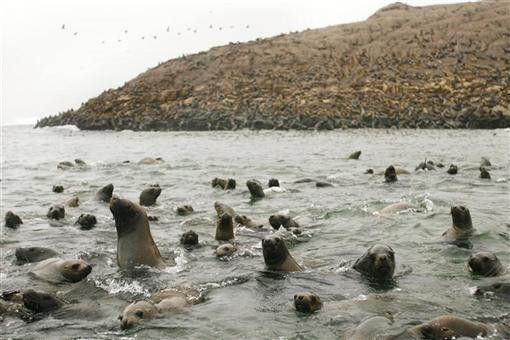Peru Probes Into The Deaths Of 500 Sea Lions

Hundreds of sea mammals have been found dead along the Ancash region. At least 500 decomposing bodies of sea lions were removed from the shores of Anconcillo to prevent any health threats to the community.
A district governor suspects local fishermen and farmers of poisoning these sea creatures. The police are still investigating the matter and considering other possible reasons for the deaths.
In October, 117 dead sea lions were found on north western shores. Nearly 200 dead sea animals, including dolphins, turtles and pelicans washed up in the Piura region in early November.
Mysterious massive deaths of sea animals along Peruvian beaches have been occurring since 2012. More than 3, 000 dead dolphins and thousands of anchovies were washed ashore the Northern coast in 2012. Again, the underlying reasons remain unresolved. In April 2012, around 5,000 dead pelicans were also found along these shores. Marine biologists theorise that these birds may have starved to death because of the warm current that drove the fish or food source to the south. However, this assumption and the possibility of viral infection were ruled out.
Environmental groups have their own theories as to why this sad phenomenon is happening. The marine mammal rescue group Organización Científica para Conservación de Animales Acuáticos (ORCA) believes that the presence of oil exploration ships in the area produced sonic sounds that harm dolphins and other marine animals internally. Yet, there is no concrete evidence to support this theory.
These unusual death rates in sea animals and indefinite conclusions are unsettling. A comprehensive study has to be pursued so conservation efforts can be guided accordingly.




















